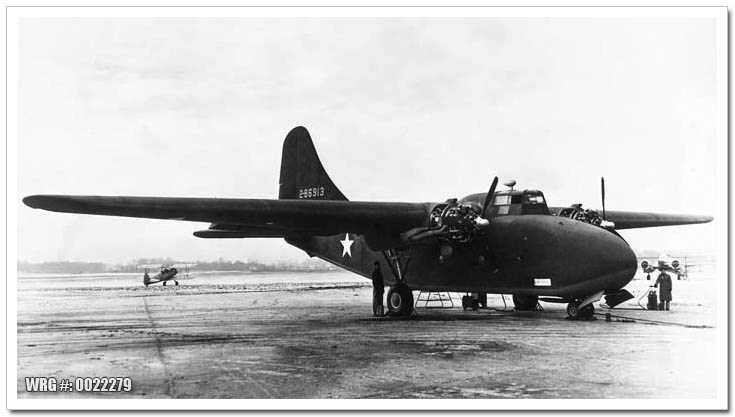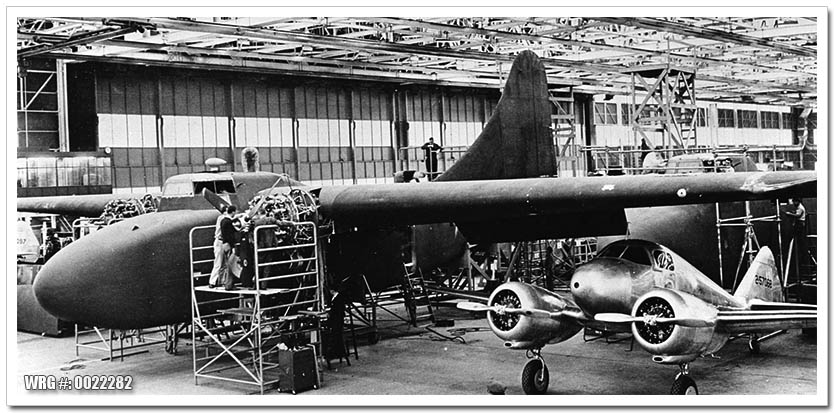U.S.A.A.F. RESOURCE CENTER > TRANSPORTS > C-76 CARAVAN > PREVIOUS PAGE
Design & Development
The Curtiss-Wright CW-27 was designed by Curtiss-Wright's chief designer George A. Page, Jr. as a high-wing, twin-engine, cargo transport aircraft, utilizing plywood construction with a tricycle undercarriage. Though the British de Havilland Mosquito had successfully employed a ply construction using a balsa wood core and birch hardwood exterior, Curtiss-Wright engineers, using research provided by Forest Products Laboratory, rejected this approach, insisting instead on a ply construction of dense mahogany, which greatly increased the plane's weight. At Curtiss' request, Army Materiel Command laid in large supplies of mahogany, and a number of furniture manufacturers, including the Baldwin Piano Company, were subcontracted to build components for the plane, which would be assembled at Curtiss-Wright's new defense plant in Louisville, Kentucky.

[Source: USAAF Photo]
The original contract called for 11 YC-76 preproduction aircraft, and the first aircraft would be built and tested at Curtiss-Wright's St. Louis, Missouri Division plant. Subsequently, orders for five C-76 production aircraft and nine revised YC-76As were placed by the USAAF, with line production to commence at the Curtiss-Wright plant in Louisville as well as a Higgins Aircraft factory in New Orleans, Louisiana. To keep the plywood flexible during construction the factory was kept hot and damp. The prototype YC-76 first flew on May 1, 1943.

Curtiss-Wright production line for the C-76 Caravan in 1943.
A Curtiss AT-9A Jeep trainer (42-57068) is nestled under the Caravan's wing.
[Source: USAAF Photo]
Sources:
Wikipedia
U.S.A.A.F. RESOURCE CENTER > TRANSPORTS > C-76 CARAVAN > PREVIOUS PAGE
